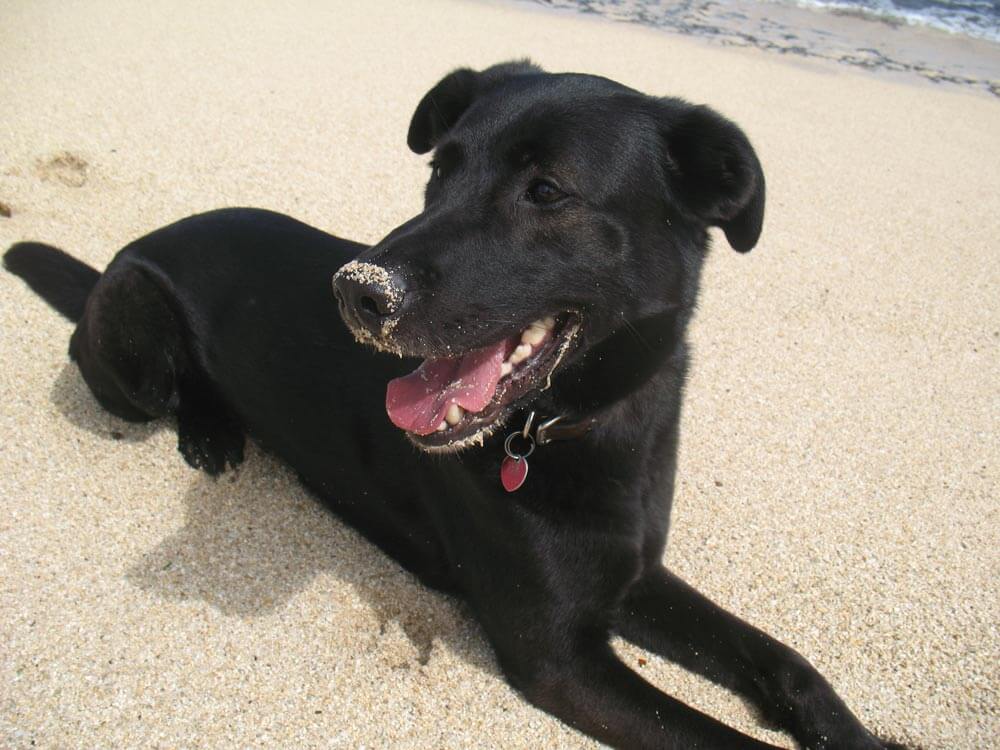Guidelines for Working Dog Programs
Mission and Vision
Many shelters in the United States have high-energy, reward-driven dogs who may be difficult to place into homes due to their overabundance of energy and need to play. However, these two qualities–high energy and high toy drive–are the primary characteristics sought in successful candidates for conservation detection or other working dog programs.
Rescues 2the Rescue is a program created by Working Dogs for Conservation (WD4C) and the International Fund for Animal Welfare (IFAW). We aim to connect high-energy, high-drive shelter dogs with detection dog trainers and other such working dog programs. As a bridge between shelters and working dog trainers, Rescues 2the Rescue offers a sound, successful alternative to traditional adoption for difficult to place dogs and provides them with enriching and rewarding careers.
Rescues 2the Rescue is a platform connecting adoptable dogs with trainers. Dogs and trainers are vetted according to the guidelines below to maximize successful adoptions and minimize failures and poor matches. Rescues 2the Rescue retains the final decision regarding inclusion of both dogs and trainers in this program. Rescues 2the Rescue will not be directly involved in the transfer of animals.
Guidelines Overview
The following guidelines provide a general overview of the policies and practices recommended for working dogs throughout their lives, especially during training and deployment. WD4C and IFAW prioritize the health, well-being, and humane treatment of dogs during every step of the process, including their time as a working dog and during retirement.
We ask that anyone participating in Rescues 2the Rescue review these guidelines and use them to help their dog build a successful career. For more information, please visit the Contact section of our website or email Rescues2theRescue@gmail.com.
Training
WD4C’s training philosophy upholds respect for the dogs and encompasses all aspects of how they live and are handled. This includes:
- Employing an adequate and fair working schedule to maintain each dog’s health and maximize their effectiveness
- Ensuring that nutritional needs are met for each individual dog with respect to the environment in which the dog works, the amount of work they undertake, individual metabolic activity, dietary considerations, and supplemental needs
- Playing and relaxing away from their given job; down time is critically important for working dogs and should be allocated and tailored according to the individual needs of the dog
Program Implications
Detection dog trainers and partnering organizations will undergo the screening process described in the Guidelines for Working Dog Adoptions to ensure their methods meet WD4C and IFAW standards for humane training. Potential trainers and partners agree to abide by the screening administrators’ decision regarding inclusion on the website.
Trainers and partners participating in Rescues 2the Rescue agree to maintain humane standards for housing, care, training, and nutrition.
Positive (i.e. reward-based) training methods must be the foundation of training programs for the trainer/organization to be in the Rescues 2the Rescue program.
Working Schedule
An appropriate working schedule is essential for the health, well-being, and longevity of any working dog. Special considerations should include:
- Length and timing of work schedule, especially considering the specific work the dog will be doing
- Conditions of the physical environment including terrain, temperature, extreme weather, and potential safety threats such as dangerous wildlife
- The individual needs of each dog and their current health status
Dogs should never be worked to the point of exhaustion. Dogs should always be given adequate breaks according to the aforementioned conditions. Days off should also be employed on a regular basis, so dogs are able to recover.
WD4C recommends the approximate distance traveled–as measured by the straight-line distance the handler travels–should not exceed 8-12 km per day. However, appropriate distance can vary significantly depending on the target and terrain. It is important to ensure a reasonable distance as off-leash dogs will cover almost twice as much distance as the handler.
Similar consideration should be given to a dog’s schedule and the frequency of working and resting days.
Nutrition
Nutrition is critically important for working dogs. They are often on their feet for full working days, up to five days per week. The rate at which they’re expending energy is greater than most house dogs, so nutrition must be kept at a high standard to ensure dogs remain healthy, fit, and capable of performing.
Diet should be individualized based on the following parameters:
- Individual metabolic rates
- How much work the dog does daily and/or weekly
- What type of work the dog is doing
- The environment in which the dog is working (ex. climate, terrain, etc.)
- How much energy is expended by the dog in his/her daily routine
The inclusion of cooked meats and vegetables into a dog’s diet is preferable for maintaining energy and health and should be added when possible. However, homemade diets can be difficult to provide during transport and in remote field locations.
When feeding kibble, it is important to research brands and ingredients to ensure the food is a high-quality, high-protein diet. We recommend consulting with a veterinarian and reading package labels, especially the ingredients and guaranteed analysis, to obtain a good understanding of which kibble brands are the best quality. Often, veterinarians can provide guidelines for your dog’s needs with respect to protein, minerals, and other supplements–all essential factors in determining the best quality diet for an individual dog.
Supplements are often necessary to ensure a dog receives a robust and adequate diet. Supplementing should always be done on an individual basis and with the consultation of a veterinarian.
Safety
Safety during training and work deployment should be the highest priority for trainers and canine partners. It is the trainer’s and handler’s responsibility to assess threats to both the dog’s and handler’s safety and adjust work schedules accordingly. This includes not only the environmental conditions into which the dog is being deployed, but also understanding the dog’s physical condition.
First Aid Preparation
Handlers must be trained to administer first aid care. Basic veterinary first aid kits should be on-hand to deal with minor emergencies in the field. These kits should include: self-cling bandages, muzzle or strips of cloth, a nylon leash, antiseptic wipes, adhesive tape, absorbent gauze, and cotton swabs. For more detailed information about what to include in your dog’s first aid kit, please visit the AVMA Pet First Aid Supplies Checklist. When working in new or remote field locations, WD4C recommends consulting with a local veterinarian to find out if there are hazards specific to the area which would require additional first aid supplies.
Availability of Medical Services
Emergency veterinary and human medical services should be reachable at all times in the event of a major emergency. Handlers should know where these services are located and always have the means to reach them when deployed in the field.
Situational Awareness
Handlers must exhibit situational awareness and be able to account for and mitigate any potential threats to safety within the working environment. This may include extreme weather conditions, dangerous terrain, conflicts with wildlife, and other situations which could pose a threat the dog and/or handler. It is critical to understand the area where the handler and dog will be deployed to account for any potential dangers.
- Work schedules must be adjusted to limit potential encounters with both dangerous wildlife (e.g. large predators, venomous snakes) and wildlife which could be harmed by encounters with the dog or handler (e.g. endangered species)
- In cases where there is an established threat (e.g. abundance of venomous snakes), it would be wise to have on hand any useful antidotes or medicines that could be administered if contact occurred
Before deploying each day, handlers should assess both their own physical condition and that of each working dog to ensure the dog(s) can safely and effectively complete his/her work.
Weather Conditions
Extreme weather conditions must be mitigated when necessary. Extreme heat conditions require proper equipment to cool dogs including tents, fans, and cooling coats or pads to help maintain safe body temperature. It is also important to protect their feet in both extreme heat and cold, snowy, or icy conditions. Storms or extreme heat may also limit the amount of work a dog can do in a day. For example, when working in conditions with temperatures exceeding 100° F, working schedules should be adjusted so that dogs are only out in the early morning and for a limited number of hours to prevent overheating.
Transport
Dogs must be kept safe and comfortable during transport. Moving dogs to and from field deployment should always consider the following:
- Weather conditions, temperature, and forecast along the entire route
- Terrain
- Length of time in transit
- Individual needs of the dog(s) being transported
Transporters should be prepared to mitigate any potential disasters en route. This may require including extra equipment and supplies, having medical kits on-hand, and knowing alternate driving routes.
Use of Crates
Crates utilized to house dogs during transport should be appropriately sized so the dog is able to turn around, stand, and lie down in comfort. The choice of using a wire or hard side crate will mostly depend on weather conditions. Wire crates are more appropriate for heat and hard side crates are more appropriate for cool conditions.
Temperature Regulation
Extreme heat may require the inclusion of fans, cooling coats or pads, and extra breaks to provide water and monitor body temperature to ensure the dog is not overheating. Extreme cold might require covering crates with insulated covers and providing extra blankets or heating pads. Dogs should be monitored constantly during any extreme weather conditions to ensure they are safe and comfortable.
Breaks
Long transport trips will require water and toileting breaks. Dogs should take a break at least as often as the human members of the traveling party. Age is an important factor to considering in break frequency; some dogs require breaks every three or four hours while others may be able to sleep straight through a seven-hour trip. It is therefore important to know the dog you’re transporting and understand his/her needs.
Veterinary Care
Regular veterinary care is essential for healthy, happy dogs. Individual dogs’ needs for veterinary care are often dependent on where the dog will be deployed for field work. International travel requires handlers to check each country’s vaccination requirements and ensure they are met. It is also necessary to understand any local disease threats the dog(s) may face.
A dog’s job may also dictate what type of regular medical upkeep is required. For example, determining whether a dog should be on heartworm year-round will depend on where he/she tends to deploy for work. Each handler should consult with their veterinarian about recommended and necessary vaccinations to ensure their dog is safe and healthy under a variety of circumstances. All dogs should receive rabies vaccination regardless of location or job status.
WD4C tends to seek out veterinarians across multiple disciplines (e.g. wildlife specialists and veterinarians practicing allopathy, naturopathy, chiropractic care, and acupuncture). Additionally, it is important to consult local veterinarians based on where the dog will be going and what other species of animal he/she is likely to encounter. Prior to deployment, it is critical to understand what the handler must do to maintain a dog’s health, given the geographically specific parasites, diseases, or other health risks he/she may encounter
Placement for Dogs Who Cannot Complete Training
A contingency plan for dogs who are unable to continue with training must be in place and agreed upon by both parties–the shelter providing the dog and the adopting trainer/organization–prior to the adoption.
Reasons a dog might not be suitable for training include:
- The dog is uninterested in the job
- The dog has a general lack of motivation or willingness to learn
- The dog is not sufficiently reward driven
- Physical constraints
- Other health problems
Recommendations for dogs not suitable for training
Dogs who are unable to complete their training program for whatever reason should either be delivered back to the shelter from which they came (in coordination and agreement with that shelter) or adopted out through the trainer/organization’s network.
We also recommend contacting a breed-specific rescue as such a group might be in the best position to find an appropriate home with a good understanding of the dog’s needs.
Prior to transport of the dog, it is essential that the shelter and trainer(s) determine the best course of action should the dog prove unsuitable for the job. Agreements made and upheld throughout the process will ensure the best possible outcome for each dog, shelter, and trainer. Though some dogs may be challenging to place, every reasonable effort should be made to ensure they are provided with an appropriate home.
Guidelines for Working Dog Adoptions
General Guidelines for Trainers
Trainers will be screened through a process created by WD4C prior to gaining access to adoption information on the site. Trainers must complete a form explaining how they fit within the Rescues 2the Rescue community and disclosing their training objective(s) and philosophy. These forms enable R2R reviewers to get a better understating of the trainer and/or their organization.
This form also includes a Code of Conduct agreement for trainers and shelters, outlined below.
WD4C and IFAW prioritize the health, well-being, and humane treatment of dogs during every step of the process, including their time as a working dog and during retirement. Trainers must be able to describe and verify their use of positive training methods as the foundation for their program.
General Guidelines for Shelters
Shelters seeking to post a dog will also undergo a screening process for each individual dog to assess that dog’s potential for success within a working dog program. The screening process includes a series of play-based trials and behaviors which will be filmed and scored based on our evaluation guide. An example video and instructions on how to conduct a screening test are on the Rescues 2the Rescue website.
The dog’s score and video will be used to determine the his/her suitability as a working dog and whether he/she is an appropriate candidate to post on the website.
Energy and toy drive are the two primary qualities assessed in the R2R evaluation. Dogs whose temperament, as exhibited in the video, does not fit within WD4C expectations for working dogs, will not be accepted. This screening process is in place to minimize the risk of dogs entering training programs and later being deemed unsuitable.
A WD4C staff member and primary manager for the Rescues 2the Rescue project will curate both trainer and dog screenings.



